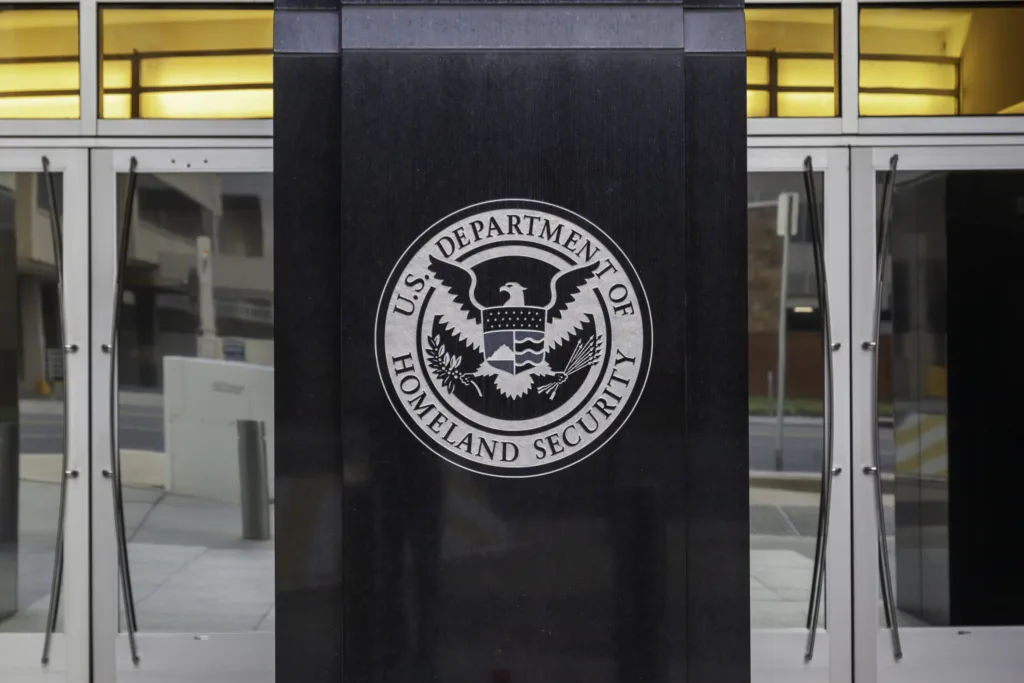Duration of Status (D/S) is a term used to describe the length of time an individual on a nonimmigrant visa can stay in the United States. This status is typically given to students and scholars on F or J visas, and it allows them to remain in the country as long as they are maintaining their status.
For F-1 students, D/S covers the period when they are full-time registered students making normal progress toward their degree, as well as an optional period of practical training following completion of studies (if they apply for OPT). This means that as long as they are enrolled in a full-time course load and making progress towards their degree, they are allowed to stay in the US. Once they complete their studies, they may apply for OPT, which grants them an additional period of time to work in the US related to their field of study.
It’s important to note that maintaining status also includes following regulations such as reporting any changes in address or program of study to the designated school official, and staying within the authorized period of stay. Failure to maintain status may result in consequences such as being barred from re-entry into the US or being deported.
For visitors on B-1 or B-2 visas, D/S is not typically granted. While their visas may be valid for up to 10 years, they are only permitted to stay in the US for a short duration, usally no longer than six months. This is granted by US Customs and Border Protection upon arrival, and visitors must leave the country before their authorized period of stay expires.
Duration of status is an important concept for nonimmigrants to understand. It allows F-1 students to stay in the US as long as they maintain their status and follow regulations, while visitors on B-1 or B-2 visas are only allowed to stay for a short period of time. By understanding and following these regulations, nonimmigrants can ensure they have a successful and legal stay in the US.
Understanding the Meaning of ‘Duration of Status’ in Immigration
Duration of status is a term used in the context of U.S. immigration law, specifically for individuals holding F-1 student visas. It means that the length of the individual’s legal stay in the U.S. is tied to their student status, rather than a specific end date. This means that as long as the student remains enrolled full-time and making normal progress toward their degree, they can stay in the U.S. until they complete their program.
Additionally, if the student applies for Optional Practical Training (OPT) after completing their studies, they can also stay in the U.S. for a crtain period of time to work in their field of study. However, it is important to note that any violation of the terms of their F-1 status, such as dropping below full-time enrollment, can result in their status being terminated and they may be required to leave the U.S. immediately.

Duration of Status on I-94
Duration of Status (D/S) is a notation that is usually stamped on the I-94 arrival/departure record of students and scholars who are in the United States on F or J visas. This notation means that the person is allowed to remain in the United States for as long as they maintain their visa status and their Form I-20 (for F-1 students) or DS-2019 (for J-1 scholars) remains valid. In othr words, D/S is not a specific expiration date but rather a period of time that is tied to the person’s status and program of study or research. It is important for F and J visa holders to keep their I-20 or DS-2019 up-to-date and to comply with all visa regulations in order to maintain their D/S status and remain legally in the United States.
Understanding the Meaning of ‘Valid Until Duration of Status’
Valid util duration of status (D/S) means that as an F-1 student, you are allowed to remain in the United States for the duration of your program of study, as long as you maintain your nonimmigrant student status. The D/S designation is usually indicated on your admission stamp and signifies that you do not have a specific end date for your visa. Instead, your visa is valid for as long as you maintain your student status, which includes attending classes, making satisfactory academic progress, and following the rules and regulations of your school and the U.S. government. It’s important to note that if you violate any of these requirements, you may lose your nonimmigrant student status and be required to leave the country. Therefore, it’s essential that you remain in compliance with all rules and regulations to ensure that you can continue your studies in the United States for as long as you need to.
Duration of B2 Status
Duration of Status (D/S) is a term used for individuals who enter the United States as B-2 visitors. D/S means that the individual is allowed to stay in the United States for as long as they maintain their status as a visitor, or unil the expiration date on their I-94 arrival/departure record. This means that the duration of status for B-2 visitors is not limited to a specific date, but rather dependent on the individual’s compliance with the terms and conditions of their visa. It is important to note that individuals on B-2 visas should not use the D/S period as a way to live or work in the United States, as this is not permitted under visitor status.
Types of Immigration Status
There are four types of immigration status, which are citizens, residents, non-immigrants and undocumented. Citizens are individuals who were either born in the United States or have become naturalized after three to five years as permanent residents. Residents, also knon as green card holders, are individuals who have been granted legal permanent residency in the United States. Non-immigrants are individuals who are authorized to temporarily stay in the United States for a specific purpose, such as students, tourists or temporary workers. Lastly, undocumented individuals are those who do not have legal authorization to reside in the United States. It is important to note that each of these immigration statuses have their own set of privileges and limitations.

Understanding the Meaning of Status in Immigration
In immigration, status refers to an individual’s legal standing in the United States. It indicates the person’s authorization to live and work in the country. For example, if someone has permanent resident status, they are allowed to reside in the US indefinitely and work without restrictions. On the othr hand, if someone has a nonimmigrant status, such as a student or work visa, they are authorized to be in the US temporarily for a specific purpose.
An individual’s status can affect their eligibility for certain benefits, such as access to healthcare, education, and social services. It can also impact their ability to travel outside of the US and return without issue. Maintaining proper immigration status is crucial, as violating immigration laws can lead to detention, deportation, and other legal consequences.
Obtaining and maintaining immigration status can be a complex and lengthy process that requires navigating a variety of legal requirements and procedures. Consulting with an experienced immigration attorney is highly recommended to ensure that individuals have the best chance of obtaining and maintaining their desired immigration status in the US.
Staying After I-94 Expiry: How Many Days?
Unfortunately, there is no grace period after the expiration of your I-94 while in H-1B status. This means that once your I-94 expires, your status ends, and you are no longer authorized to stay in the United States. It is crucial to make arrangements to depart the country as soon as possible to avoid any negative consequences, such as being barred from entering the United States in the future. It is important to note that the expiration of other documents, such as your visa, does not extend your authorized stay beyond the expiration of your I-94.
Does Every I-94 Have an Expiration Date?
Not all I-94 records have an expiration date. The validity of an I-94 depends on the conditions of an individual’s lawful status in the United States. If soeone has been granted a specific period of stay, then the expiration date of the I-94 will coincide with the end of that period. However, for those who have not been granted a specific period of stay, their I-94 record will remain valid as long as they maintain their lawful status in the country. It is essential to note that the expiration date of a visa does not necessarily coincide with the expiration date of an I-94. Therefore, it is crucial to keep track of the expiration date of both documents to avoid overstaying in the United States.
Status of I-94
The I-94 is a document that tracks the entry and exit of foreign nationals who come to the United States. It is an important document that determines your status whle in the U.S. The status on your I-94 can vary depending on your specific circumstances. For example, if you enter the U.S. on a visa, your I-94 will reflect the type of visa you have been issued and the duration of your stay. If you enter the U.S. on an advance parole document, your I-94 will indicate that advance parole was granted by the district office. It is important to note that your I-94 status can impact your ability to work, study or travel in the U.S. Therefore, it is important to carefully review your I-94 status and ensure that it is accurate and up-to-date.

What is the Meaning of Duration of Stay on a Visa?
Duration of stay on a visa refers to the maximum period of time a visa holder is allowed to stay in the country from the day of entry. This means that once you enter China, for instance, your duration of stay starts counting the next day. The duration of stay is usually speified on the visa alongside other details such as the number of entries allowed, visa type, and validity period. It is important to note that exceeding the duration of stay allowed on your visa could result in penalties, fines, or even deportation. Therefore, it is advisable to plan your visit accordingly, and ensure you do not overstay your visa.
Confirming Approval of a Visa
After your immigrant visa interview, the consular officer will inform you wether your visa application is approved or denied. If your visa application is approved, then you will be informed by the consular officer at the end of the interview. You will also receive a visa stamp in your passport.
However, if your visa application requires further administrative processing, then the consular officer will inform you of this at the end of your interview. This means that your visa application will take additional time to process after your interview.
You can check the status of your visa application online by visiting the Consular Electronic Application Center (CEAC) website. You will need your CEAC barcode and your case number to access your visa application status.
It is important to note that the processing time for visa applications can vary depending on the type of visa you are applying for and the volume of applications being processed at the consulate. If you have any concerns or questions about your visa application, you can contact the consulate where you applied for your visa.
Duration of H-1B Status
The H-1B work authorization visa has a maximum duration of 6 years, wich is divided into an initial period of three (3) years and extensions available for up to an additional three (3) years. This means that those in H-1B status can remain in the US for up to six years to work in their specialty occupation. It is important to note that the duration of stay is not guaranteed and is subject to approval by the US Citizenship and Immigration Services (USCIS). Additionally, some individuals may be eligible for extensions beyond the 6-year maximum under certain circumstances, such as if they have a pending green card application.
Duration of Stay for B1 B2 Visa
B1 and B2 visa holders are allowed to stay in the United States for a maximum period of six months at a time. This means that individuals who hold a B1 or B2 visa can remain in the US for six months from their date of entry. However, it’s important to note that the duration of stay is determined by the US Customs and Border Protection officer at the port of entry, and they have the authority to grant a shorter or longer stay based on the applicant’s specific circumstances. In addition, if a B1/B2 visa holder wishes to extend their stay beond six months, they must file an application with the US Citizenship and Immigration Services (USCIS).

Duration of F2 Status
Duration of Status (D/S) is a term used to describe the period of time that an F-2 dependent can legally remain in the United States. F-2 status is directly tied to the F-1 student’s program of study, and as long as the F-1 student maintains their status, the F-2 dependent can remain in the US. The F-2 dependent’s status will expire when the F-1 student’s status expires.
The F-2 status permits a 60-day grace period at the end of the F-1 student’s program of study to prepare for departure from the US. During this time, the F-2 dependent can legally remain in the US, but cannot work or study. It is important to note that if the F-2 dependent wans to continue staying in the US, they must apply for an extension of their status before the end of the 60-day grace period. Failure to do so may result in the F-2 dependent being out of status, which can have serious consequences for their ability to enter or remain in the US in the future.
Duration of Status for F-2 dependents is tied to the F-1 student’s program of study and permits a 60-day grace period at the end of the program to prepare for departure from the US. If the F-2 dependent wants to continue staying in the US, they must apply for an extension of their status before the end of the grace period.
Duration of Status for L2 Visa Holders
Duration of Status (D/S) is a term used to describe the period of stay in the United States for certain non-immigrant visa holders, including those on an L2 visa. For L2 visa holders, the duration of status is tied to the validity of the L1 visa held by the primary visa holder, who is typically the spouse or parent of the L2 visa holder.
The L2 visa is valid for the same period as the L1 visa, which is typically three years for an L1-A visa and two years for an L1-B visa. However, it is important to note that the L2 visa will expire as soon as the L1 visa expires.
In addition to being tied to the validity of the L1 visa, the duration of status for L2 visa holders is also subject to a maximum limit of 7 years for dependents of an L1-A visa holder and 5 years for dependents of an L1-B visa holder. After this period, the L2 visa holder must either leave the United States or apply for a change of status to another visa category.
It is important for L2 visa holders to keep track of the expiration dates of their visa and their duration of status to avoid any immigration issues or complications.
Conclusion
The duration of status (D/S) on an F-1 student’s admission stamp means that they are allowed to stay in the United States for the length of their F-1 status, which covers the period when they are a full-time registered student making normal progress toward their degree, and an optional period of practical training fllowing completion of studies if they apply for OPT. It is important to note that maintaining nonimmigrant student status is crucial for staying in the United States under D/S. Visitors on B-1 or B-2 visas may only stay in the United States for a short duration, as granted by US Customs and Border Protection upon arrival, regardless of the length of their visa. Therefore, it is essential to understand the terms of your visa and status to ensure compliance with U.S. immigration laws.
